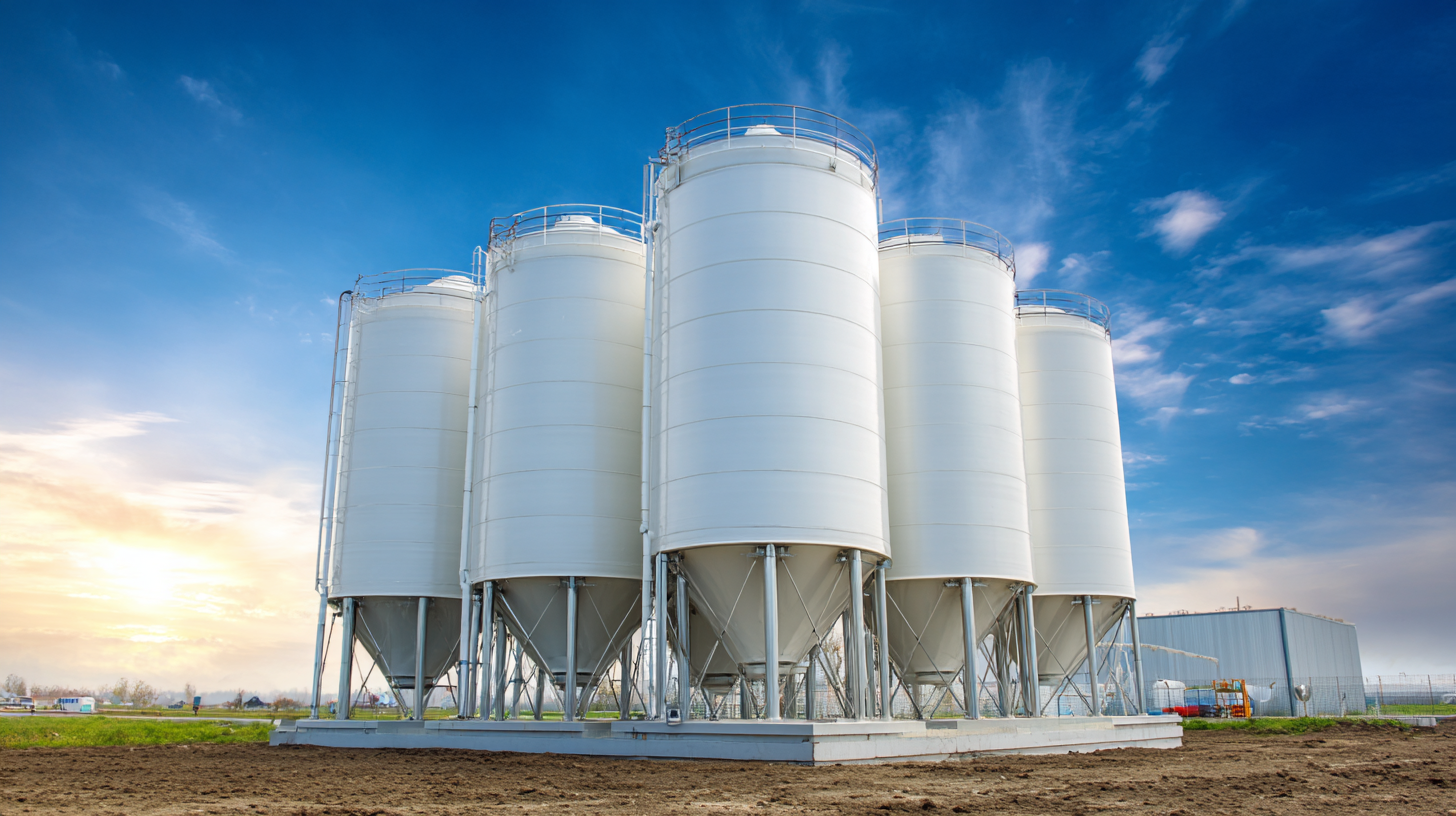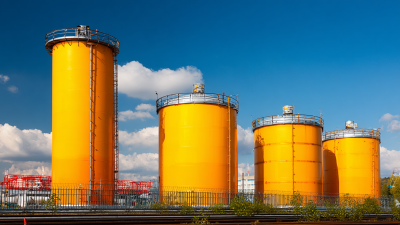In an era where efficient resource management is paramount, the selection of the right water storage tanks plays a critical role in both residential and commercial sectors. According to a report by Global Market Insights, the water storage tanks market is projected to surpass USD 26 billion by 2026, driven by the increasing demand for clean water and the necessity for effective water resource management. A well-chosen water storage tank not only enhances water availability but also contributes to sustainability efforts, especially in regions facing water scarcity.

Furthermore, the recent trends indicate that innovations in materials and design can lead to significant improvements in tank durability and efficiency, making it essential for users to understand their specific needs and the available options. This guide aims to provide you with the essential insights required to maximize efficiency in the selection of water storage tanks tailored to your unique requirements.
When selecting water storage tanks, it is crucial to understand the various types available, as each serves distinct purposes and applications. For instance, polyethylene tanks are favored for their resistance to rust, corrosion, and UV rays, making them ideal for both residential and commercial use. Their lightweight nature and ease of installation are particularly advantageous in settings where mobility is essential. Alternatively, steel tanks offer durability and are often utilized in industrial contexts where larger capacities are required, providing strength and long-term reliability in demanding environments.
Another option to consider is fiberglass tanks, which combine the benefits of both plastic and metal. They are non-corrosive and can withstand extreme temperatures, making them suitable for both above and below ground installations. Additionally, there are specialized tanks, such as rainwater harvesting tanks and fire suppression tanks, designed for specific needs. By understanding these different types, users can make informed choices that maximize efficiency and ensure the longevity of their water storage systems.
 Choosing the right materials for water storage tanks is crucial for maximizing efficiency and ensuring long-term functionality. Different materials, such as concrete, steel, plastic, and fiberglass, offer varying levels of durability, resistance to environmental factors, and suitability for specific applications. For instance, concrete tanks are ideal for large-scale storage and are often used in municipal systems, while plastic tanks provide lightweight options that are easier to install and maintain. Understanding the application requirements is essential for selecting a material that aligns with both budgetary considerations and operational needs.
Choosing the right materials for water storage tanks is crucial for maximizing efficiency and ensuring long-term functionality. Different materials, such as concrete, steel, plastic, and fiberglass, offer varying levels of durability, resistance to environmental factors, and suitability for specific applications. For instance, concrete tanks are ideal for large-scale storage and are often used in municipal systems, while plastic tanks provide lightweight options that are easier to install and maintain. Understanding the application requirements is essential for selecting a material that aligns with both budgetary considerations and operational needs.
In addition to material selection, factors such as cost, safety, and ecological impact should also be considered. High-pressure gas tanks, for example, require stringent safety standards and specialized materials to withstand the pressures involved in hydrogen storage.
Meanwhile, the shift toward sustainable practices is influencing manufacturers to invest in eco-friendly materials and designs. As more industries look to capitalize on hydrogen's potential, the interplay of technology and material innovation will play a key role in shaping the future of water storage systems.
When selecting water storage tanks, evaluating capacity and size requirements is crucial for ensuring optimal efficiency and functionality. According to the Global Water Tank Market report from Research and Markets, the demand for water storage solutions is projected to grow at a CAGR of 6.8% from 2022 to 2028. This trend underscores the importance of choosing the right tank size to meet growing residential and commercial demands. For instance, a household usually requires a water tank with a capacity ranging from 1,000 to 2,500 gallons depending on the number of occupants and outdoor activities, while agricultural or industrial needs can demand significantly larger tanks.
 Understanding specific capacity needs goes beyond mere volume; it encompasses the importance of material and location. The Water Environment Federation emphasizes that the proper sizing can help mitigate water shortages and maximize available resources efficiently. Selecting a tank that is too small can lead to inadequate supply during peak usage, while an oversized tank might incur unnecessary costs and maintenance efforts. By accurately assessing daily water consumption patterns, one can ensure the installation of a water storage system that aligns with both immediate needs and future growth, thereby enhancing long-term sustainability and cost-effectiveness.
Understanding specific capacity needs goes beyond mere volume; it encompasses the importance of material and location. The Water Environment Federation emphasizes that the proper sizing can help mitigate water shortages and maximize available resources efficiently. Selecting a tank that is too small can lead to inadequate supply during peak usage, while an oversized tank might incur unnecessary costs and maintenance efforts. By accurately assessing daily water consumption patterns, one can ensure the installation of a water storage system that aligns with both immediate needs and future growth, thereby enhancing long-term sustainability and cost-effectiveness.
When it comes to modern water storage tanks, the integration of advanced features can dramatically enhance efficiency and reliability. Recent industry reports indicate that tanks equipped with technologies such as smart sensors can reduce water waste by up to 20%, providing a sustainable solution for both residential and commercial applications. These sensors monitor water levels in real-time, alerting users to any leaks or necessary maintenance, thereby prolonging the lifespan of the tank and ensuring optimal performance.
Additionally, many contemporary models now incorporate insulation capabilities that help maintain temperature stability, which is crucial in preventing bacterial growth in warmer climates. According to the Water Industry Association, insulated tanks can improve water quality while reducing energy costs by up to 30%. This kind of investment not only supports environmental sustainability but also enhances user comfort and safety.
Tip: When selecting a water storage tank, consider models with integrated smart technology and insulation features. This combination will not only maximize efficiency but also offer peace of mind through improved water quality management. Additionally, be sure to check for compliance with local regulations to ensure that your chosen solution meets safety and quality standards.
When selecting water storage tanks, maintenance and safety are crucial factors that cannot be overlooked. Regular inspections are essential to identify potential issues early, such as corrosion, leaks, or sediment buildup. This proactive approach helps in extending the life span of the tank and ensuring that the water remains uncontaminated. Scheduled cleaning and sanitization should also be part of the routine maintenance, as this prevents the growth of algae and bacteria, which can compromise water quality.
Safety considerations involve ensuring that the tank is installed in accordance with local regulations and standards. This includes proper anchoring, especially in areas prone to natural disasters such as earthquakes or floods. Additionally, safeguarding access points and implementing safety measures such as warning labels can mitigate risks associated with maintenance activities. Overall, prioritizing maintenance and safety in the management of water storage tanks not only enhances their longevity but also protects the health and well-being of users.






